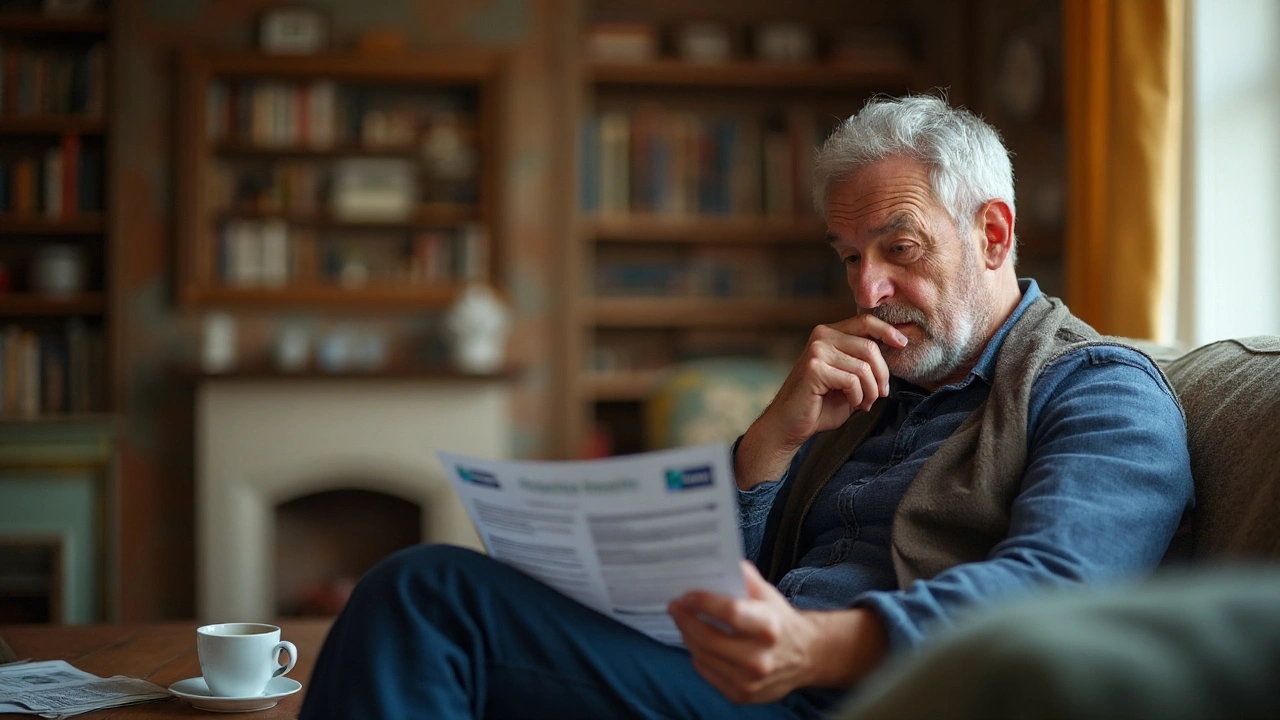Proscar: Uses, Side Effects, and Guide for Men’s Prostate Health
Get the facts on Proscar: how it works for enlarged prostate, key side effects, dosage tips, and what every man should know before starting finasteride.
Read MoreNoticed slow urine flow, more nighttime trips to the bathroom, or a feeling that your bladder never empties? Those are common signs of BPH — a noncancerous enlargement of the prostate that affects many men as they age. You don’t have to accept these symptoms as ‘just getting older.’ There are clear tests, medicines, and simple habits that can make life better.
Start with a chat with your primary care doctor or urologist. They’ll ask about your symptoms and may use tools like a urine test, a digital rectal exam (DRE) to feel prostate size, and a PSA blood test to rule out other issues. If needed, they can measure urine flow, check residual urine with a quick ultrasound, or recommend a cystoscopy. See a doctor sooner if you can’t urinate at all, have blood in urine, fever with urinary problems, or sudden worsening — those can be emergencies.
Treatment depends on how bad symptoms are and how much they bother you. If symptoms are mild, many doctors suggest watchful waiting plus lifestyle fixes. Try reducing evening fluids, cutting back on caffeine and alcohol, and double-voiding (urinate, wait a few minutes, try again). Pelvic floor exercises can help bladder control for some men.
When medication is needed, two main classes are used. Alpha blockers (tamsulosin, alfuzosin) relax the muscles around the prostate and bladder neck to improve flow fast, often within days. Side effects can include dizziness or low blood pressure. 5-alpha-reductase inhibitors (finasteride, dutasteride) shrink prostate tissue over months and work best for larger prostates; sexual side effects are possible. Sometimes both are used together for better results.
If meds don’t help or symptoms are severe, there are minimally invasive procedures and surgeries. Options range from office procedures like UroLift or Rezum that lift or reduce prostate tissue, to transurethral resection of the prostate (TURP) for more significant obstruction. Recovery time, effectiveness, and side effects vary, so talk specifics with a urologist.
Keep an eye on medication interactions (especially if you take blood pressure drugs) and common side effects like low libido or erectile issues. Ask your doctor how a treatment might affect sexual function, driving, or work.
Want practical next steps? Track your symptoms for a week (times you pee, how much, urgency, leaks). Bring that log to your appointment — it helps your doctor pick the right plan. If you need reliable medication info or options to buy prescriptions online, make sure the pharmacy is licensed and asks for a valid prescription.
BPH can be managed. With the right tests, a clear plan, and small daily changes, many men regain comfort and confidence. If symptoms bother your sleep, work, or daily life, don’t delay — a short visit can point you to fast relief.

Get the facts on Proscar: how it works for enlarged prostate, key side effects, dosage tips, and what every man should know before starting finasteride.
Read More